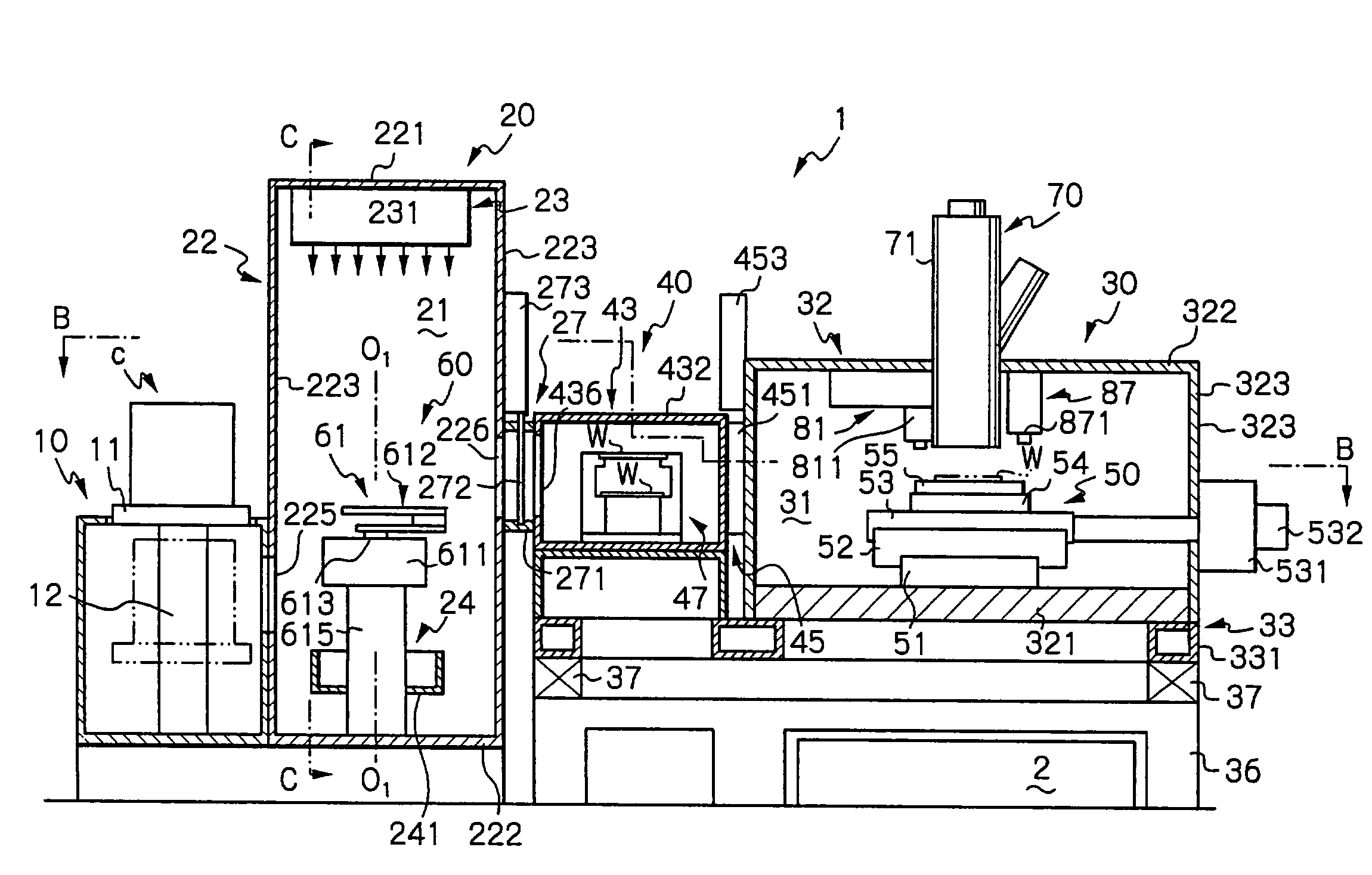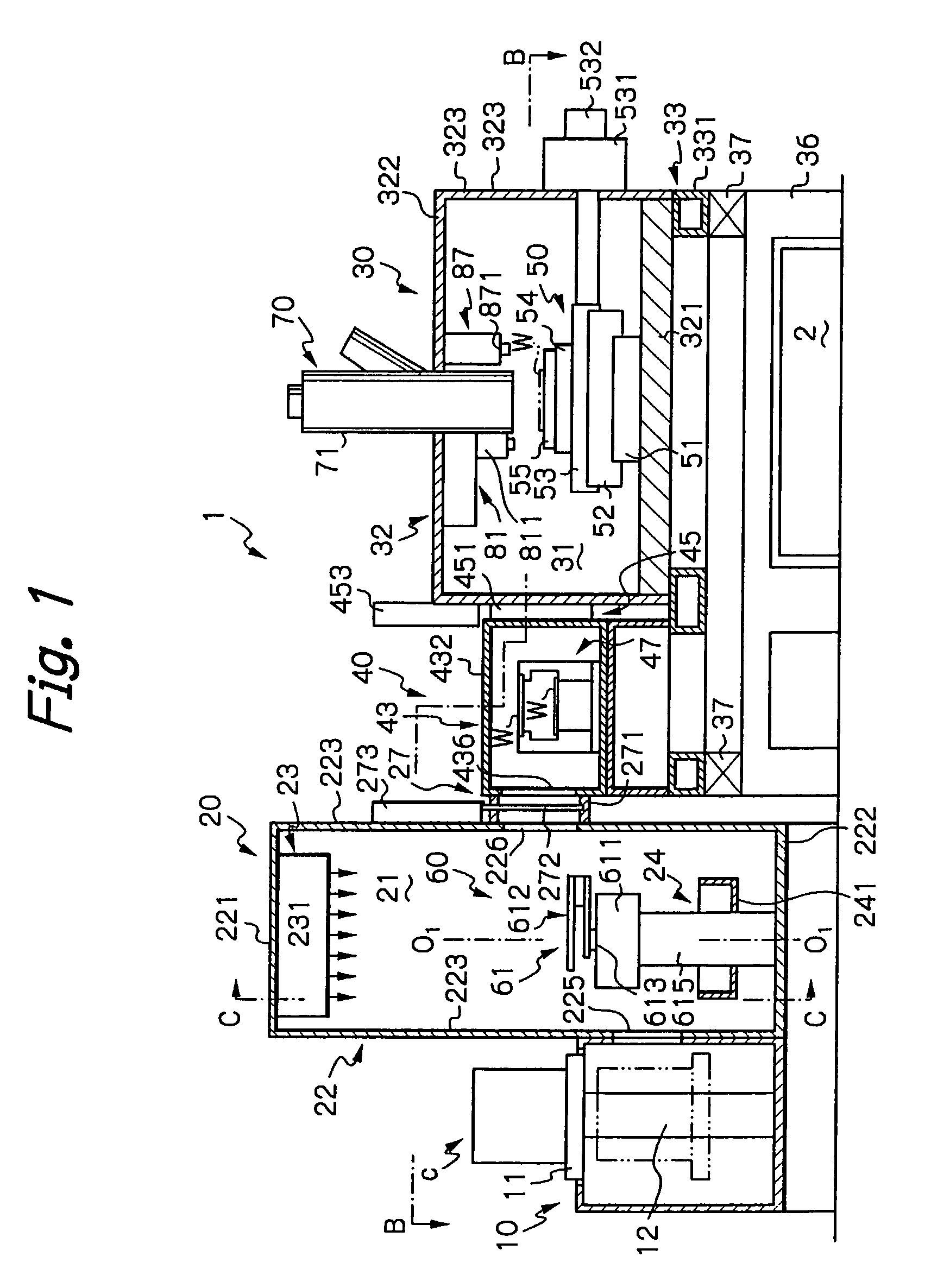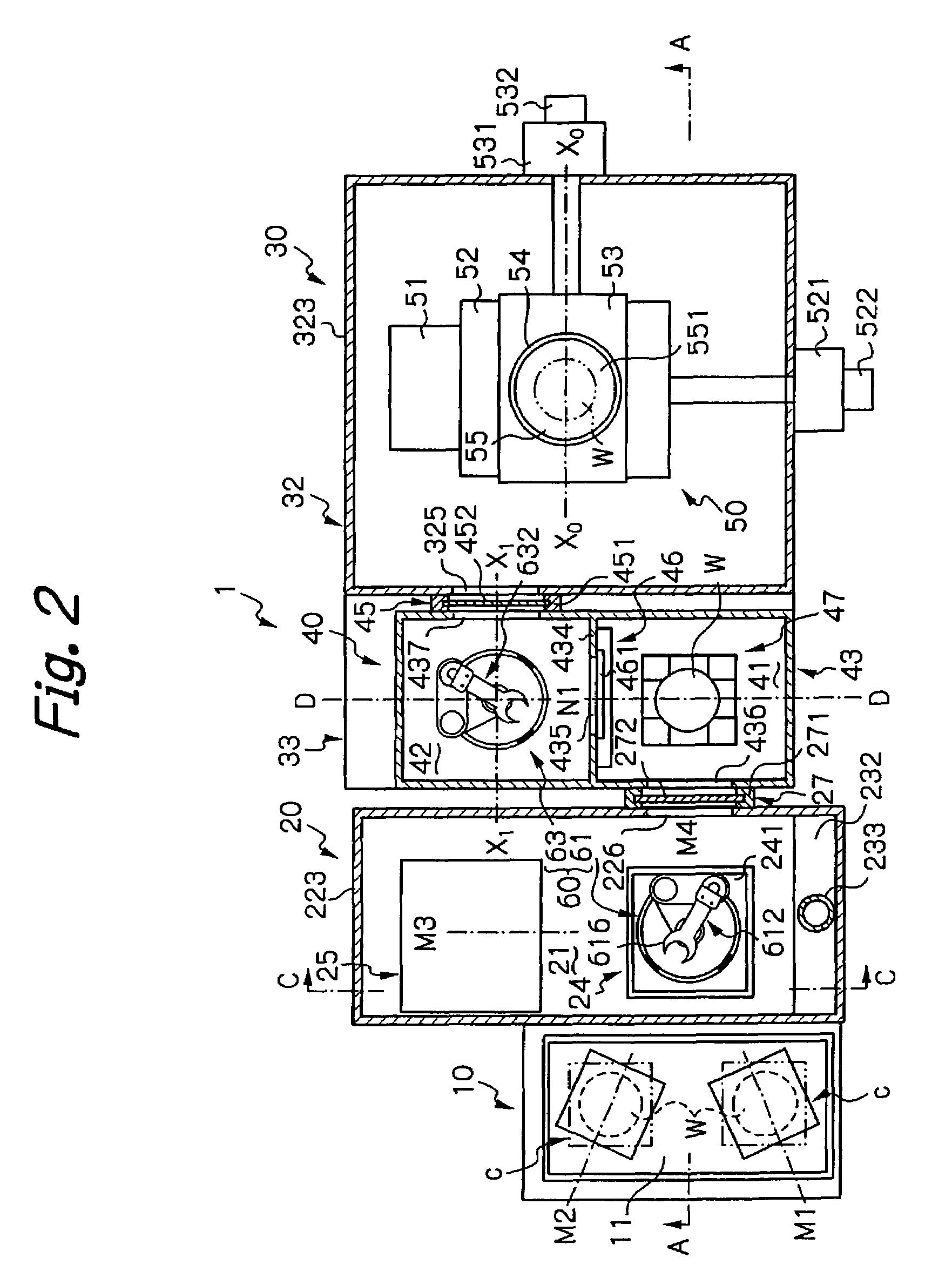Electron beam apparatus and device fabrication method using the electron beam apparatus
a technology of electron beam and electron beam, which is applied in the field of electron beam apparatus and device fabrication method using electron beam apparatus, can solve the problems of reducing the quality of sem images, requiring a huge amount of time for inspection, etc., and achieve the effect of improving throughpu
- Summary
- Abstract
- Description
- Claims
- Application Information
AI Technical Summary
Benefits of technology
Problems solved by technology
Method used
Image
Examples
third embodiment
[0252]A third embodiment, shown in FIG. 24 uses essentially the same configuration as that described above (Stage Improvement 1, for improving the maintenance of stable vacuum in the working chamber). In this embodiment, a diaphragm 19-3 with a built-in differential discharge structure is provided around the electron beam irradiator 2-3 of the column 1-3. The diaphragm 19-3 is cylindrical in shape, and has a circular channel 20-3 formed inside, with a pumping path 21-3 extending upward from the circular channel. This discharge path connects to a vacuum line 23-3 through an internal space 22-3. An ultra-fine gap of from a few tens of μm to a few mm is formed between the bottom end of the diaphragm 19-3 and the top surface of the sample S.
[0253]In this configuration, when gas is emitted from the stage during its movement, raising the pressure in the chamber C, and thus urging a flow of gas into the electron beam irradiator 2-3 (output end of the column), because the diaphragm 19-3 has...
fourth embodiment
[0255]A fourth embodiment is shown in FIG. 25. A diaphragm 26-3 is provided around a chamber C and an electron beam irradiator 2-3, for separating the electron beam irradiator 2-3 from the chamber C. This diaphragm 26-3 is connected through a support member 29-3 (made of a material that is a good conductor, such as copper or aluminum) to a refrigeration unit 30-3, which cools it to between −100° C. and −200° C. A member 27-3, for blocking thermal conduction between the chilled diaphragm 26-3 and the column, is made of a material of poor thermal conductivity, such as a ceramic or resin. Also, a member 28-3, made of a non-insulating ceramic, etc., is formed at the bottom end of the diaphragm 26-3, to prevent discharge between a sample S and the diaphragm 26-3.
[0256]Through such a configuration, gas molecules attempting to flow from the chamber C to the electron beam irradiator are blocked by the diaphragm 26-3, and any gas that does manage to enter is frozen onto the surface of the di...
fifth embodiment
[0258]A fifth embodiment is shown in FIG. 26. Provided on the two movable units of the stage 3-3 are the same diaphragms 12-3 and 14-3 as are shown in FIG. 22. Therefore, regardless of where the sample stage 4-3 is moved, these diaphragms, through the gap closure stops 50-3 and 51-3, wall partition off the inner space 13-3 from the chamber C. In addition, formed around the electron beam irradiator 2-3 is a diaphragm 16-3 like the one shown in FIG. 23, for partitioning off the inside of the chamber C from the electron beam irradiator 2-3 space 24-3, through a gap closure stop 52-3. Through this configuration, when gas adsorbed during stage movement is discharged into the space 13-3, raising the pressure in this portion, any increase in pressure in the chamber C can be suppressed, and any pressure increase within the space 24-3 can be even further suppressed. In this manner, the pressure in the electron beam irradiation space 24-3 can be maintained in a low pressure state. Also, a dif...
PUM
 Login to View More
Login to View More Abstract
Description
Claims
Application Information
 Login to View More
Login to View More - R&D
- Intellectual Property
- Life Sciences
- Materials
- Tech Scout
- Unparalleled Data Quality
- Higher Quality Content
- 60% Fewer Hallucinations
Browse by: Latest US Patents, China's latest patents, Technical Efficacy Thesaurus, Application Domain, Technology Topic, Popular Technical Reports.
© 2025 PatSnap. All rights reserved.Legal|Privacy policy|Modern Slavery Act Transparency Statement|Sitemap|About US| Contact US: help@patsnap.com



